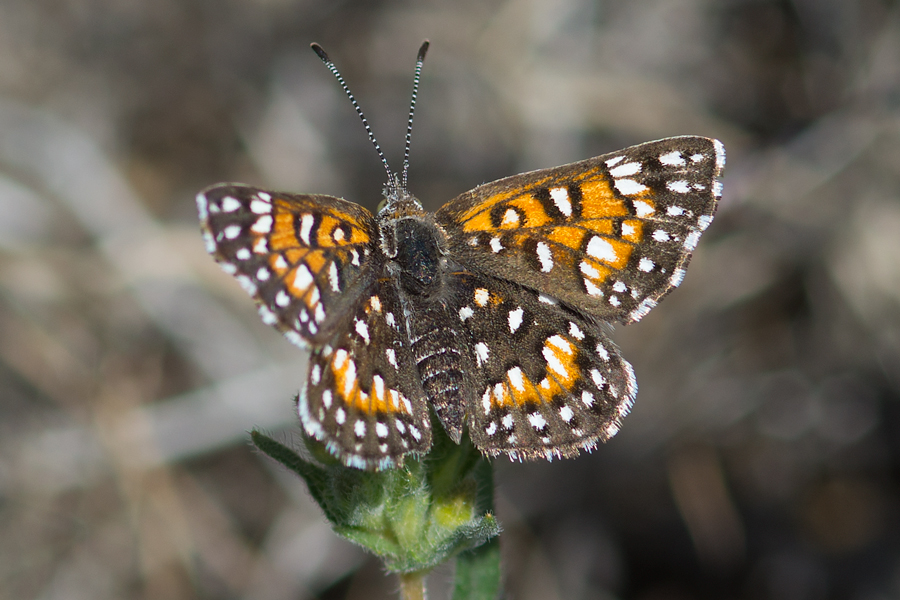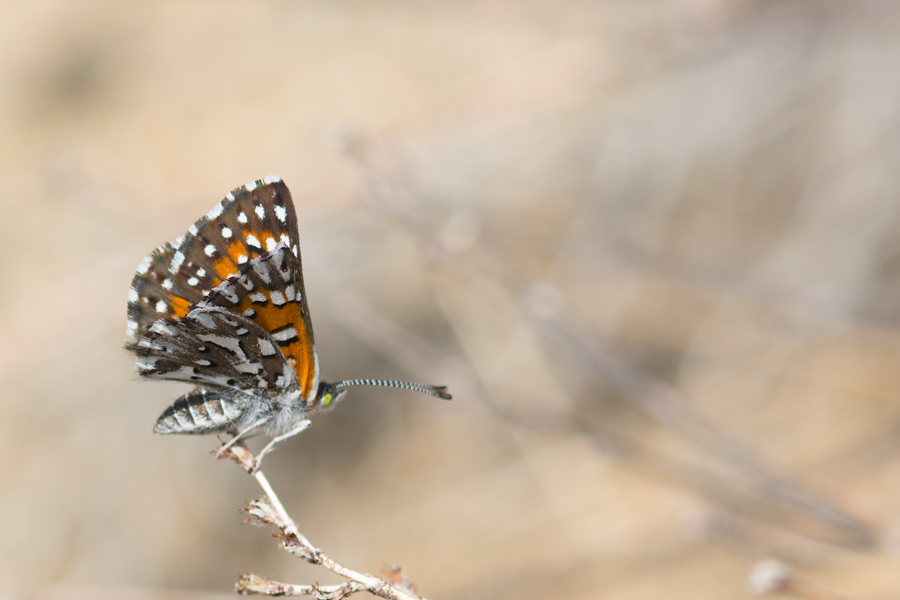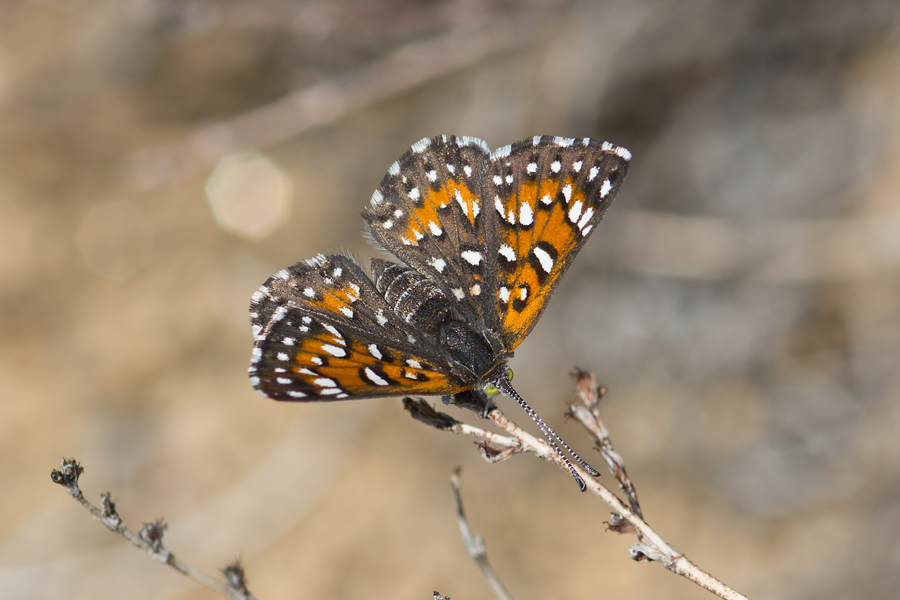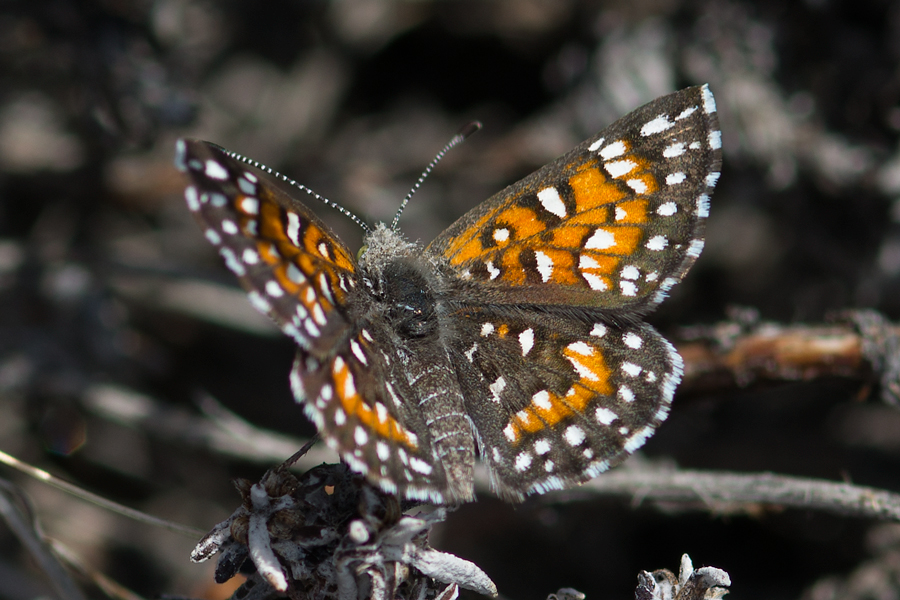Apodemia virgulti davenporti
Davenport's Metalmark
This metalmark looks superficially like nominate virgulti, but is single brooded with an adult flight mid April to late May. What phenotypical characters are different from its multiple-brooded relative are spelled out in detail in the original description by the Emmel brothers and Gordon Pratt in the 1998 Systematics book (pp.801-2). The type locality is Walker Pass in Kern County, and the distribution is the eastern (desert) side of the Sierra Nevadas south to the Tehachapis and Paiutes. My understanding is that this is the northern end of a boomerang-shaped cline which, at the other end, terminates with the dark subspecies mojavelimbus in Joshua Tree National Park. The middle of this cline is north of the San Gabriels (e.g. Valyermo) where the spring flyers blend and have a variety of wing characters. The main food plant for this butterfly's caterpillars is California buckwheat (Eriogonum fasciculatum). It also is said to use nudum and wrighti.



